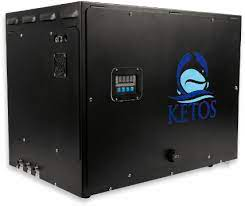Remotely Measure Levels of Manganese in Water
Monitoring Water for Manganese With KETOS SHIELD
Accurately Measure Levels of Manganese in Water
Download our KETOS SHIELD overview to learn how your organization can benefit from:
- An interoperable solution that integrates with existing infrastructure
- 24/7 access to data, including the ability to customize dashboards and threshold alerts for a full view of past and present water quality
- A system that eliminates the need for multiple analyzers, manual processing, and third-party modeling
- An EPA-compliant and lab-accurate reporting of all KPIs
Learn To Automate Manganese Testing In Water With Lab-Accurate Results in Real-Time
"*" indicates required fields
Testing for Manganese in Water
 Discover KETOS SHIELD and find out how easy it is to monitor for heavy metals (like manganese) on-site, in real-time. Get a modern solution that integrates into existing infrastructure and lowers monitoring costs.
Discover KETOS SHIELD and find out how easy it is to monitor for heavy metals (like manganese) on-site, in real-time. Get a modern solution that integrates into existing infrastructure and lowers monitoring costs.
As an intelligent water management solution, KETOS SHIELD provides real-time monitoring for manganese and 30+ other water testing parameters (including other heavy metals like lead, copper, iron, and selenium). Monitoring happens within a cloud-enabled modular system that allows for safe, easy 24/7 access.
Why Monitor Water for Manganese with KETOS
While manganese is an essential nutrient and is present in many foods, our understanding of its effects is slowly changing. Previously, it was only seen as an aesthetic issue if high levels appeared in water (as it caused discoloration). However, new research now shows that high levels of manganese consumption can impact development in young children, potentially causing issues related to memory, motor function, and attention.
While the EPA advises safe levels of manganese in water to be 0.3 mg/L, the element is not currently regulated, and (at this time) there is not an enforceable limit for manganese when it comes to drinking water. The industry expects changes to manganese regulation on the horizon. The EPA has added it to UCMR4 (the 4th Unregulated Contaminant Monitoring Rule). This rule requires public utilities serving drinking water to 10,000+ constituents to monitor for the element.
What are the Issues with Manganese in Water?
Manganese, a naturally occurring mineral, is commonly found in water sources around the world. While manganese is essential for various biological processes, elevated levels in water can lead to several challenges and issues. Here are key concerns associated with manganese in water:
- Health Risks: Excessive manganese levels in drinking water can pose health risks to humans. Chronic exposure to elevated manganese concentrations may lead to neurological effects, including tremors, cognitive deficits, and behavioral changes. Infants, young children, and individuals with certain medical conditions may be particularly vulnerable to manganese-related health issues.
- Aesthetic Problems: High manganese concentrations in water can cause aesthetic issues, including a brownish or blackish discoloration and an unpleasant metallic taste or odor. These characteristics can make water unappealing for drinking, cooking, and other household uses, impacting consumer satisfaction and confidence in water quality.
- Staining and Scaling: Manganese contamination can result in staining of plumbing fixtures, sinks, and laundry. Manganese deposits can also accumulate as scale in pipes, water heaters, and appliances, reducing water flow, impairing equipment performance, and increasing maintenance costs for homeowners and businesses.
- Corrosion and Infrastructure Damage: Manganese can contribute to corrosion of metal pipes, fittings, and plumbing fixtures in water distribution systems. Corrosion-related issues can lead to leaks, pipe failures, and infrastructure damage, compromising the integrity of water distribution networks and necessitating costly repairs and replacements.
- Microbial Growth: Manganese deposits can serve as a substrate for microbial growth and biofilm formation in water distribution systems. Increased microbial activity may contribute to water quality deterioration, including taste and odor issues, and increase the risk of microbiological contamination and waterborne diseases.
- Treatment Challenges: Removing manganese from water sources can be challenging, particularly when dealing with dissolved manganese or complexed forms of manganese. Conventional treatment methods such as oxidation, filtration, and ion exchange may be effective for certain manganese species but may require additional pretreatment or post-treatment steps to achieve desired water quality standards.
Causes of Manganese in Water
Manganese in water can originate from natural geological sources, as well as anthropogenic activities. Geological formations rich in manganese minerals, such as pyrolusite and rhodochrosite, can contribute to the presence of manganese in groundwater and surface water. Through weathering and erosion processes, these minerals release manganese into water sources. Additionally, human activities such as mining, industrial discharges, and agricultural practices can introduce manganese into water systems. Pollution from industrial runoff or wastewater containing manganese compounds can contaminate waterways, impacting water quality. While manganese is essential for biological processes and is typically present in water at low concentrations, elevated levels can lead to aesthetic issues, such as staining and unpleasant taste. Understanding the various sources and factors influencing manganese levels in water is essential for managing its presence and ensuring safe drinking water supplies.
Acceptable Levels of Manganese in Water by Industry
In water quality management, acceptable levels of manganese vary across industries due to different sensitivities to this metal. In drinking water, the WHO recommends a guideline value of 0.5 mg/L to ensure public health and prevent adverse effects. However, in industrial processes such as steel manufacturing, higher levels up to 1.0 mg/L might be acceptable. Similarly, for agricultural purposes, irrigation water may tolerate manganese levels of up to 0.2 mg/L without significantly affecting crop health. Nonetheless, these values are subject to regional regulations and specific industry standards, which may vary globally. Ensuring water quality within acceptable limits is crucial to prevent adverse effects on human health, industrial processes, and environmental sustainability.
| Industry | Acceptable Manganese Level (mg/L) |
|---|---|
| Drinking Water | 0.5 |
| Steel Manufacturing | 1.0 |
| Agriculture (Irrigation) | 0.2 |
How to Easily Monitor Water for Manganese
Manganese is just one of 30+ water testing parameters KETOS can monitor. Instead of measuring manganese with a meter that only measures a handful of conditions; the KETOS SHIELD is capable of mentoring dozens of water related issues — in real-time.
Manganese represents only a fraction of KETOS’s extensive monitoring capabilities. With over 30 water testing parameters at your disposal, including pH, turbidity, and dissolved oxygen, KETOS ensures a comprehensive assessment of water quality. Empower your organization with detailed insights for proactive water management and regulatory adherence.
Whether you need to detect nickel in wastewater, measure molybdenum in drinking water, or monitor mercury in the mining industry, KETOS’ automated water monitoring can save you time and reduce compliance issues.
What Water Quality Parameter Do You Test Most Often?
The KETOS SHIELD remotely monitors dozens of water quality parameters. Which one do your water operators test most often?
KETOS Awards
















About KETOS
KETOS is a fully integrated platform that combines hardware, software, connectivity, automated reporting, predictive analytics, and maintenance to automate water monitoring and testing. KETOS enables water operators to identify and solve mission-critical water efficiency and quality challenges in real-time, or before they happen through predictive algorithms, to ensure that water meets specific quality and safety standards.

